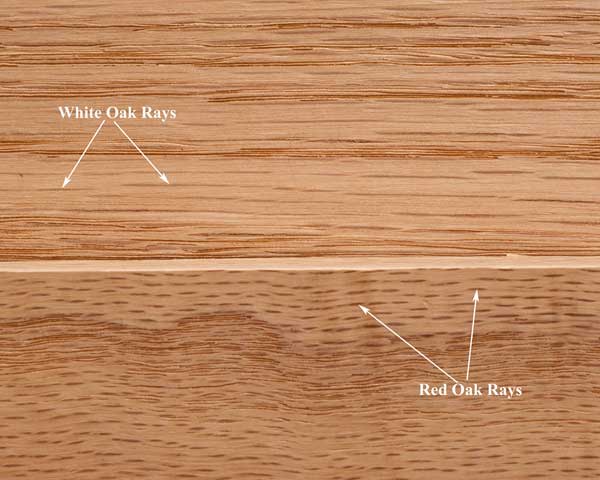As promised many moons ago, here are the sure ways to tell the difference between red and white oak after they are sawn into lumber. Since my last post here I have been asked exactly why you need to know the difference if it is so hard to tell them apart. There are a couple of subtle reasons including the woodworking qualities of each:
White Oak:
Red Oak:
In many projects, these differences may not mean much, but they need to be pointed out. There are others, including the extent of work needed to fill pores and sand when finishing the wood.
So how do you tell them apart? The first answer you will usually get is that red oak wood is reddish in color and white oak is more brown or tan. Dr. Gene Wengert, former wood science professor with the University of Wisconsin in Madison, points out that red oak is not always more red than white oak. For example, black oak, water oak, and willow oak (which are red oaks) have no red at all. Wengert advises that color is about 50 percent accurate.
You may also hear that you can blow bubbles in water through a short piece of red oak but not white oak. This is not a very reliable test either. Red oak growing under stress will not let you blow bubbles. Smell of fresh sawn wood is a little more reliable in that most white oak will smell somewhat like vanilla, and red oak will smell like…well, not very pleasant. This vanilla smell is one characteristic which makes white oak an attractive material for building barrels in which to age fine wine.
All is not lost. There are two very good tests. You can separate most white from red by noticing the ray length in the flatsawn portion of the lumber. This is the method used by most lumber graders. After a little practice, it is a very effective method. The rays in red oak are usually no longer than 3/8” or 1/2” long. In white oak, many are 1″ long or longer. In the photo, white oak is on top. Notice the very short length of the rays in the red oak. This is a common characteristic of red oak species.
Finally, the only test that is 100 percent accurate involves a chemical test. This test requires putting a few drops of sodium nitrite solution on the oak, and if it turns dark colored after a few hours, it is white oak. Sodium nitrite can be purchased from any well-supplied pharmacy, but if you use this test, don’t buy more than you need. It can be a hazardous material if used inappropriately.
Tim Knight







